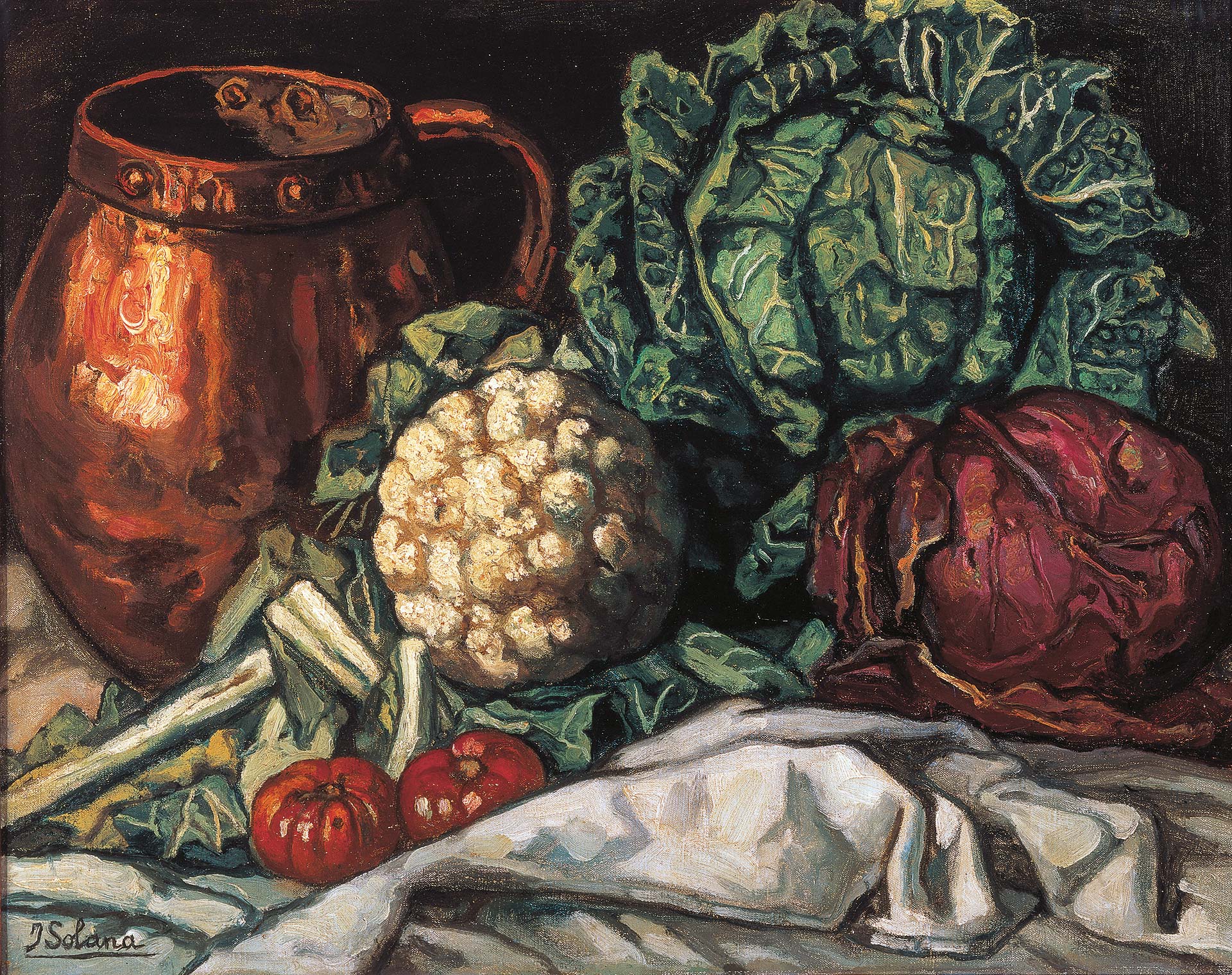
José Gutiérrez Solana (Madrid, 1886-1945)
Still Life with Red Cabbage, Copper Vessel, Cauliflower and Cabbage (Red Cabbage Still Life)
circa 1921
WORK INFORMATION
Oil on canvas, 64.5 x 81.5 cm
OTHER INFORMATION
Signed in the lower left-hand corner: "J. Solana" Inscription on the reverse, on the stretcher: "José G. Solana"
Taking Goya’s still lifes as his reference point, in this work Solana used a sublime tonal range, continuing to some extent the classic tradition of the still life in Spain, which he considered “the finest in the world.”
Solana first turned to the still life during the time he spent in Santander, where he painted Shipwreck Still Life, but it would be after his return to Madrid that he began to produce outstanding works in this genre using simple elements undoubtedly derived from his everyday surroundings. In the present canvas he approaches the various elements (the lettuce, the red and green cabbages and the tomatoes) with a boldness and force that is unusual within his work. Solana focused on the visual potential of these simple elements, grouping them in tonal masses that contrast with the beautiful whites of the cloth in the foreground in order to avoid any spaces between them.
The luminous light of Madrid may have unconsciously led the artist to lighten his palette, which contrasts with the more restrained colouring of other paintings of this time that were all painted under artificial light.
This is a more complex, highly worked type of painting, closer to reality and thus more figurative.
Solana was pleased with this painting and kept it for himself for many years, undoubtedly because it represented a pictorial hymn of praise to the use of colour
María José Salazar

